 |
 |
 |
| |
Pilot study evaluating an intensification of antiretroviral therapy with maraviroc in HIV-1-infected patients with controlled viral load exhibiting insufficient immune restoration
|
| |
| |
Reported by Jules Levin EACS 2011 Oct 12-15 Belgrade Serbia
Lise Cuzin on behalf of the study team
ANRS 145 MARIMUNO
ABSTRACT
Background: Immunological restoration with maraviroc has been described in some populations. Our study addressed the ability of a 24
weeks maraviroc (MVC) intensification of stable and efficient HAART to increase the CD4 cell count slope.
Patients and methods: Patients were able to participate if they had CD4< 350 cells/μL with a slope < 100 cells/μL over the last two
years, with sustained viral load (VL) < 50 copies/ml and stable HAART for at least 6 months. Tropism was determined by phenotypic
assay, patients harboring pure X4-using viruses being excluded. MVC was added to HAART for 24 weeks, following recommended dosages.
The primary endpoint was a significant positive difference in CD4 slopes (with MVC - pre MVC, paired t test).
Results: 60 pts were included (55 men), median age 51y, median baseline CD4: 238 cells/μL, median slope prior to intensification +14 cells/
μL/y. CD4 cells nadir was < 50/μL in 47% of the population. Tropism was defined as pure R5 or R5/X4 in 28 and 32 patients respectively. The
full set (FS) of patients who completed W24 included 57 patients, and 48 did not discontinued MVC, per-protocol (PP) set.
The median slope difference was +23 cells/μL/y (p=0.08) in FS and +30 cells/μL/y (p=0.04) in PP. Slope evolution was not different according to
baseline tropism, CD4 cells nadir, nor HAART regimen (NNRTI or PI-based). No drug-related severe adverse event was recorded during
MVC intensification. Proportions of CD8+CD38+, CD8+DR+ and CD8+DR+CD38+ activated T cells decreased significantly (respectively -6.7, -
2, and -4%), but this did not correlate significantly with slope modification.
Conclusion: In this study, intensification of stable HAART with a 24 weeks course of MVC was able to enhance CD4 cells recovery in
a subgroup of patients with insufficient immune restoration despite long term non-detectable VL. The underlying mechanisms are currently
under investigation.
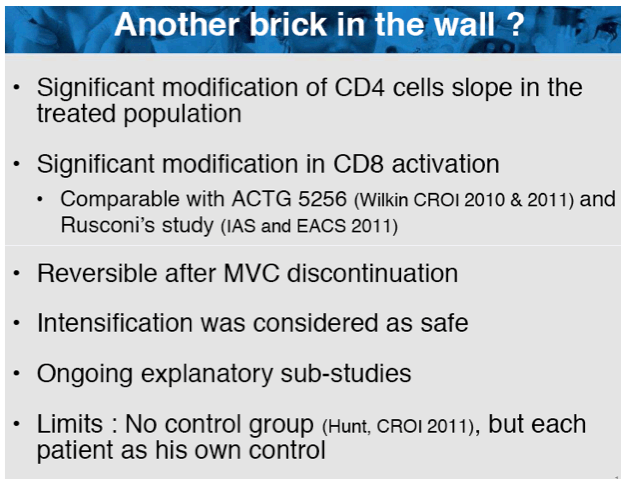
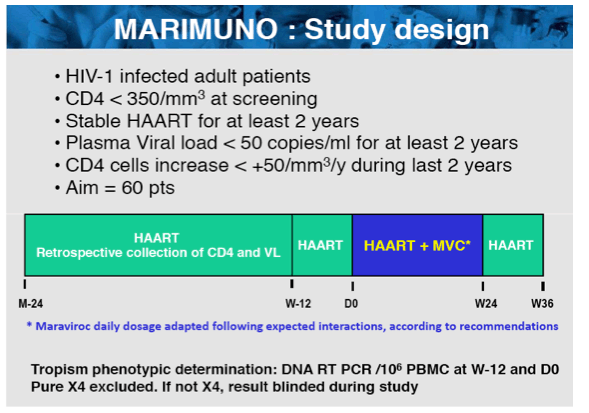
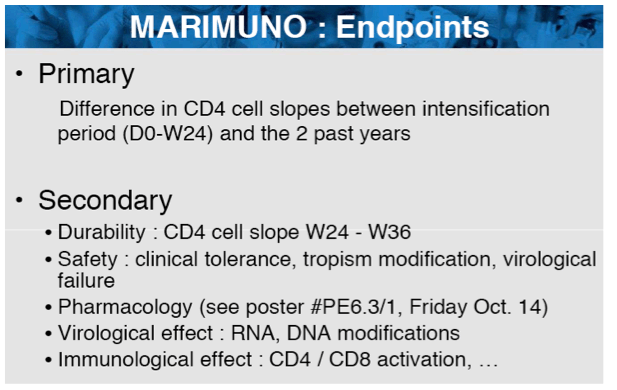
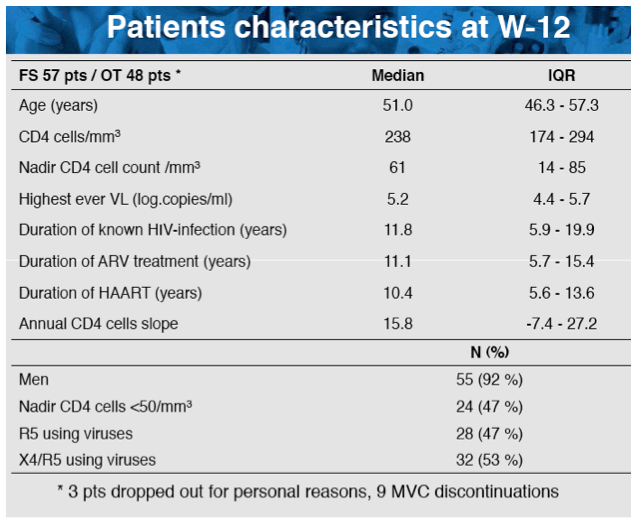
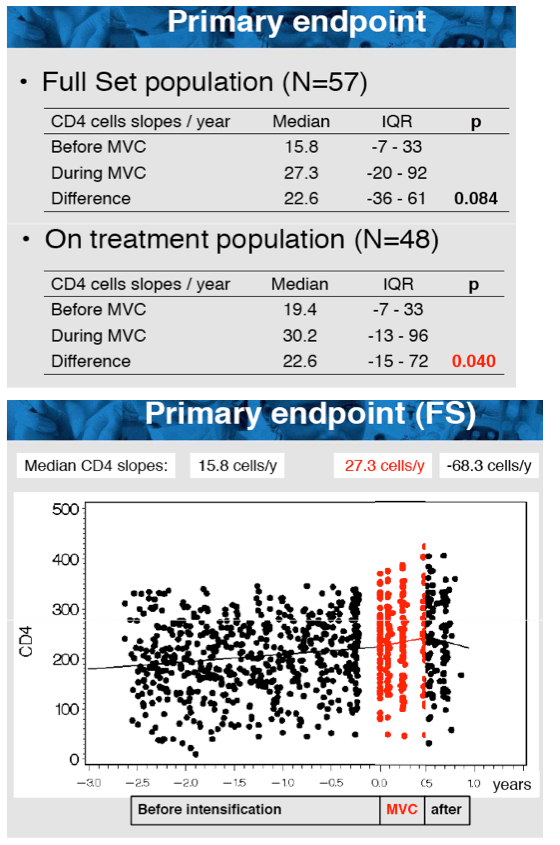
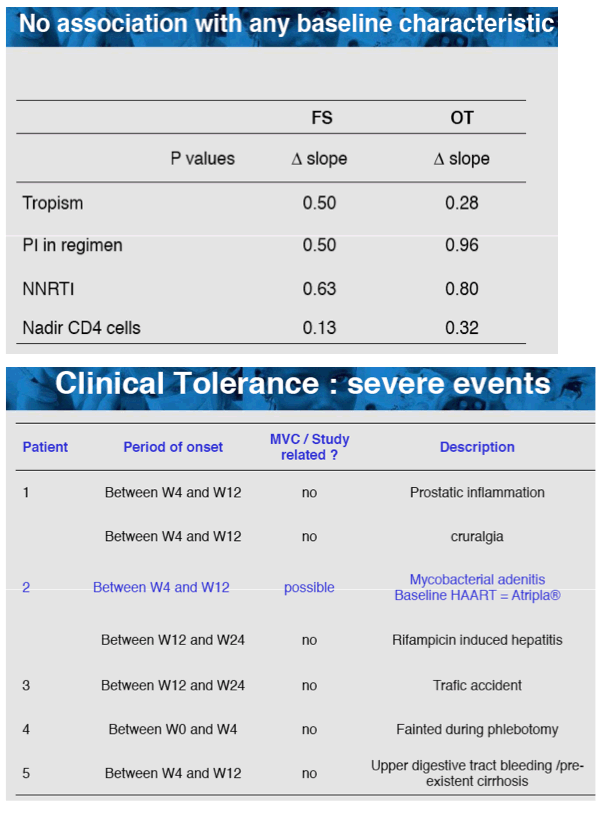
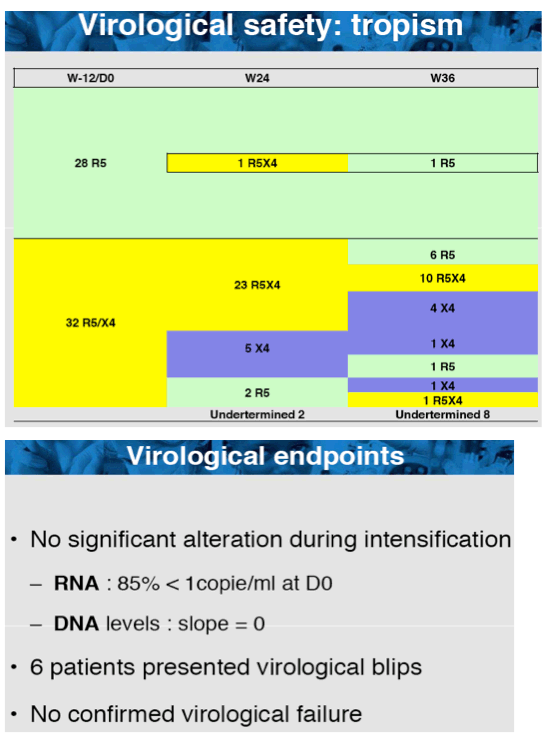
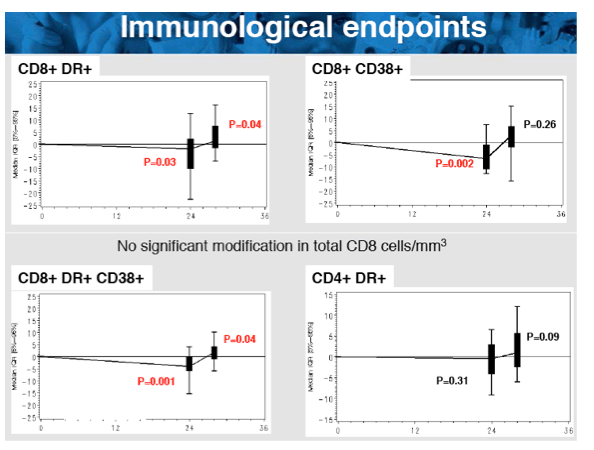
|
| |
|
 |
 |
|
|